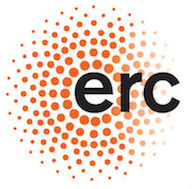All data are now available at https://biomedia.github.io/dHCP-release-notes/
Download from this site is no longer available.
First Data Release
We would like to announce the first preliminary release of data as part of the Developing Human Connectome Project (dHCP) – an ERC-funded collaboration between King’s College London, Imperial College London and Oxford University.
This is the project’s first open access data release which consist of images of 40 representative term neonatal subjects. The imaging data includes structural imaging, structural connectivity data (diffusion MRI) and functional connectivity data (resting-state fMRI). This preliminary data release comes with minimal accompanying meta data: gender, age at birth and age at scan. More specific information about the available data can be found in the accompanying data release notes. To access the data you will be required to agree to a simple data sharing agreement.
We invite colleagues in the field to explore and feedback on the value and characteristics of the image dataset. The image data are processed using analysis pipelines that are subject to further development.
The project to date has successfully completed 783 neonatal scans and further data is still being collected, including fetal imaging (imaging babies before birth). Future data releases will consist of comprehensive image data with accompanying clinical, neurodevelopmental and genetics information.
Registration
In order to be able to browse/download data, you will need to register by following this link. On the welcome page, hit ‘Register’ and fill out mandatory fields. After you verify your email address, you will be able to login and access the public face of the dHCP db. This includes browsing (although not downloading) available data sets.
If you experience any technical issues, please submit your query here.
Download
In order to unlock download options for available data sets, you will have to sign user terms. Open any data set and hit ‘Sign user terms’. Once confirmed you will be provided two options to download a data set.
1. Torrent download (recommended)
Since data sets are fairly large (expect ~500GB) this is a fail-safe way to get hold of desired releases. Be sure to have a Torrent client such as BitTorrent installed on your computer. Clicking on the ‘Download Data Set (Torrent)’ button will provide you with a .torrent file few kB in size. Opening same .torrent file in your Torrent client will give you the option to select among sub sets of the selected release. Once confirmed your torrent client will automatically start the download from multiple peers. You can pause/stop the download at any given time in case you want to. By downloading parts of the bundle you automatically become a peer for the selected .torrent file, which increases bandwidth for other peers. You are encouraged to at least upload the same amount of data that you downloaded (a download/upload ratio of 1.0 in the Torrent client), however this is not a must. Caveat: Your system administrator might block peer-to-peer traffic for various reasons.
Once you start downloading the dataset, you will notice that your torrent client mentions a sharing / seeding ratio. It means that as soon as you start downloading the dataset, you become part of our community of sharers and contribute to making the dataset available to other researchers all around the world!
There is no reason to be scared! It’s perfectly legal as long as you are allowed to have a copy of the dataset (that is the bit you need to forward to your lab’s IT team if they are blocking your ports). You are actually providing a tremendous contribution to dHCP by spreading the data, so thank you again for that. With your help, we can make sure this data remains available and can be downloaded relatively fast in the future.
Over time, the dataset will grow and your contribution will be more and more important so that each and everyone of you can still obtain the data in the smoothest possible way.
2. Direct download
If, for any reason, you cannot download data sets via torrents, you can download a compressed archive directly via https. Depending on your bandwidth, this might take some time. You will neither be able to choose sub sets of the selected release nor will you be able to pause the download. If the connection gets interrupted for any reason, you will have to start the download from the beginning.
3. Downloading non-imaging data
The background non-imaging data can be directly downloaded as an Excel spreadsheet by selecting ‘Spreadsheet’ from the ‘Options’ drop down menu from the table view page.
The data release supplementary documentation can be directly downloaded by clicking on the link ‘documentation: Data Release’ on the main table view page.

